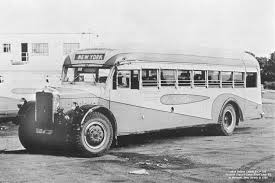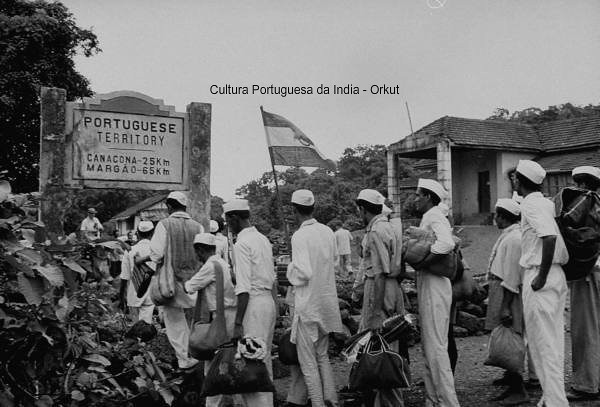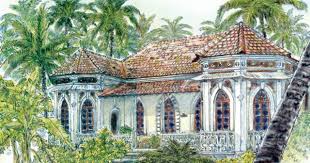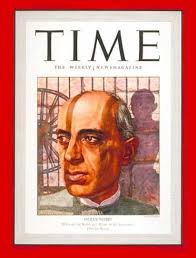Polem was where Goa ended and India began, as the soil went from brown to red.
When
I first arrived in Polem in 1956, the Portuguese immigration staff was
largely of European origin.

Checks were carried out way beyond sunset,
and if you missed the last bus to Margão

you could sleep in the verandah
of a little restaurant near the check post or under the trees. The
restaurant served xitt-koddi, fried bangdas, tisreos (clams), spicy
xacuti and tender coconut water, along with a host of Portuguese wines –
a small Vinho Porto cost eight tangas (eight annas or fifty paise).

On
two occasions, I carried a bed-sheet and timed my entry into Polem only
for the experience. The leftover passengers made friends easily and
broke into
mandos, music
www.youtube.com/watch?v=IvuFF6eNALI
Nov 17, 2011 - Uploaded by Camilo Fernandes
goan band tidal wave playing portuguese n goan mando..mov .... konkani music at verna summer fete 2012 ...
www.youtube.com/watch?v=GO72ZueZuRM
Aug 20, 2013 - Uploaded by Cidade de Goa
As part of the musical accompaniment, the Mando also saw the East-West ... goan band TIDAL WAVE .
fados music
or English pop, to the accompaniment of a
guitar till late into the night. To keep up with the rising number of
travellers, General Manuel António Vassalo e Silva, the Portuguese
governor general,

visited the post and ordered a spacious shed with
toilets to be built there.
 Kaleidoscopic insight to the Mini Portugal,
The passport system
Kaleidoscopic insight to the Mini Portugal,
The passport system
On
the other side of a hillock stood the Indian Customs office, a
British-style building with a trellis frontage. Passenger baggage was
checked in a shed outside the building next to a snack bar that served
tea and samosas, and was frequented by office staff and porters. Those
entering Goa via Karwar

usually ate breakfast before setting out, and
those leaving Goa carried staples like roast pork or

chicken cafreal,
 Chicken Cafreal - Goan Cuisine | Cooking with Thas
Chicken Cafreal - Goan Cuisine | Cooking with Thas
pão

and bananas.
The immigration and customs posts stayed open
from 10 am to 6 pm, all through the week. Those whose travel documents
could not be processed had to return to Karwar. But if you were on the
blacklist for being pro-Portuguese, you were deported to Goa regardless
of your documents.
In February 1950, India presented its first
aide-memoire to Portugal to discuss the handover of its territories, but
Portugal replied that their future was non-negotiable. India allowed
for a peaceful Exposition of St Francis Xavier’s relics in Old Goa

from
November 25, 1952 to January 6, 1953. The Bombay State Road Transport
Corporation

was permitted to ply its luxury buses right from the Belgaum
railway station up to Panjim, which had a neat booking office.
But
hardly had the Exposition ended, that Delhi started dispatching
shriller aide-mémoires to Portugal for an immediate handover of its
territories. India shut its legation in Lisbon from June 11, 1953, and
started to mount pressure, both territorially and on Portuguese
Indian-born emigrants working in India. Bombay was host to some 400 Goan
clubs

that provided Goans dormitory accommodation at a pittance. At a
certain stage, these clubs were required by the Bombay Police to
maintain registers under the Foreigners Act, 1946.
 Morning You Play Different, Evening You Play Different var _gaq ...
Morning You Play Different, Evening You Play Different var _gaq ...
From October
1953, all Portuguese European officials were required to possess permits
or visas to enter Indian territory; and in February 1954, this rule was
extended to Portuguese officials of Indian origin. On July 31, 1954,
Portugal announced that all Indian citizens entering its
territories would have to possess a passport or an equivalent document,
stamped with a visa from the Portuguese consular authority. India
promptly made it mandatory for Portuguese citizens from the colonies who
were entering the country to have permits from the Indian Consulate
General in Panjim. Those proposing to enter India on Portuguese
passports needed Indian visas, and had to be registered at the nearest
Foreigners Registration Office before getting residential permits.

From
August 1, 1954, the local Portuguese civil administrations of Goa,
Damão and Diu, began issuing a bilingual transit permit, the Documento
Para Viagem to Portuguese citizens travelling to India. The Portuguese
passport and DPV had to be stamped by the district police headquarters
before exiting Portuguese territory. This endorsement was valid for a
week.

Those travelling to Portuguese territories were issued an
Emergency Certificate printed on a sheet of brown paper by the Passport
Office in Bombay. This certificate was valid for a fortnight, though it
invariably expired by the time the Portuguese Consulate General
processed the visa, in consultation with authorities in Goa.
 BLOG DE LESTE: 50 ANOS!
BLOG DE LESTE: 50 ANOS!
These are Portuguese India 1952 First Day Cover and Maxim Card of 400th Death Anniversary of Francisco Xavier in my collection.
Routes interrupted
On
August 1, 1954, shipping and road transport services to Goa came to a
halt. A year later, the meter-gauge train that ran from Poona to Goa via
Londa
www.youtube.com/watch?v=4_W12X5J8zo
Dec 19, 2010 - Uploaded by torontochap1
circa 1985, margao train station and bombay to goa train arrival/departure at ... 0-8-0 Loco China old steam ...
www.youtube.com/watch?v=tkeM0yiqoFM
Dec 19, 2010 - Uploaded by torontochap1
... this train at margao railway station headed to vasco terminal, goa. train ... Steam locomotive train ...

also came to a standstill. At Castle Rock

and Collem stations,
passengers were put through immigration checks and their passports and
travel documents were stamped. At Caranzol, the first station in Goa,


I
recall a strapping white Portuguese immigration official with an
automatic rifle strapped to his chest verify my visa on the train with
due courtesy. On arriving in Goa, one of the few objects to be taxed
were playing cards – they were impressed upon by a Portuguese customs
stamp. Foreigners had to report to the district police headquarters in
Goa. As a British citizen, I was graciously assisted by the
Portuguese-speaking regedor of Ucassaim, Chintamani Gaitonde, in
extending my fortnight-long stay in Goa.




 Satyagraha
Satyagraha
The
August 15, 1954, satyagraha to Goa flopped with barely a hundred Goan
volunteers gate-crashing. But a year later, Delhi aided and abetted a
much more formidable satyagraha of thousands of Indians, hoping that
locals in Goa would rise in revolt. But Goans were of a different psyche
and could not be mob-roused by outsiders who had not realised that the
political scenario in Goa was very different from that in India during
the independence movement. Despite bloodshed, life moved on so
peacefully that Pandit Nehru told the Rajya Sabha on September 7, 1955,
that India was not prepared to tolerate Portuguese presence, even if
Goans wanted them there.
The blockade and a chink
On
August 6, 1955, the Portuguese legation in Delhi was ordered shut and
Portuguese interests were entrusted to the Brazilian Embassy there. On
September 1, 1955, a diplomatic, economic, post and telegraph, and
travel blockade came into effect between India and Portuguese
territories. Mail from Goa to the rest of India was routed via Karachi
in Pakistani mail bags, but mail to Goa was redirected to the sender
even if the address was under-scribed via Karachi, Pakistan. However,
by November 1955, the Universal Postal Union international protocol
prevailed, and censored mail began to move via the southern-most land
posts of Majali and Polem.
Around April 1954, India began issuing
ad-hoc permits on compassionate grounds through the Bombay state
government, regulated by the Ministry of External Affairs’ Goa office in
the Bombay Secretariat. Every applicant had to be interviewed by the
MEA chief, Ashok N Mehta, an Indian Foreign Service officer and
son-in-law of Vijaya Lakshmi Pandit.
My friend, Benito de Sousa,
was bluntly informed by Mehta that he could reach Goa only via Karachi,
as he was a British passport holder. When my turn came, Mehta asked me,
“Do you not know that foreigners are not allowed anywhere near the Goa
border?”
“Yes, I am aware, but I seek this permit on
compassionate grounds,” I replied. “I have to visit my grandmother in
Goa, as my father is tied to his work in Aden.”
“Alright,” said Mehta, “I shall see.”
A
few days after returning to Poona, I was surprised by a brown envelope
affixed with an official service postage stamp. It carried a letter
permitting me to travel to Goa via Majali for a non-specified period.
The Indian overland route permit
Taking
leave of my grandmother, uncle and aunt, I boarded the 10 pm Bangalore
Mail and arrived in Belgaum at around 6 am on May 30, 1956. Within
half-an-hour, I got onto the Bombay State Transport bus to Karwar. It
was a nine-hour journey through winding ghats offering unparalleled
natural vistas, but the journey weighed heavily on my digestive system.
At
Karwar, I was faced with a choice of only two hotels – the posh Sea
Face Hotel and Hotel Rodrigues in the shopping centre. Being low on
cash, I chose the latter and for five rupees got an apology for a room
with sack-cloth walls and a bedful of bugs. The toilet were mercifully
separated from the bathroom.
On the morning of May 30, 1956, I
boarded the bus for Kodibag, carrying a green steel trunk. It was a
45-minute ride through palm-fringed roads lined with pretty cottages.
From Kodibag to Sadashivgad, from where you caught a bus to Majali, was a
creek to negotiate by launch – a rather crude one when compared to
ferries in Goa. After a stopover at Majali village, the bus proceeded to
the immigration post where I was offloaded with a teenage girl and boy.
Both these students had declared in an affidavit that they were moving
to Goa for good.
 Portuguese passport for Goans : the "original document" hunt | Goa ...
Portuguese passport for Goans : the "original document" hunt | Goa ...
At the Indian customs post, I was ordered to
surrender my money – 43 rupees, two annas and three pice – against a
receipt valid for four months. If I failed to return before its expiry,
the money would be gifted to the Government of India, they said. Such
perfidy, I fumed. We cooled our heels for 45 minutes till the Indian
immigration officer showed up.
“Did you state in your application
for this permit that you possessed a foreign passport?” he asked,
looking at my British passport.
“Yes,” I replied, handing him a copy of my application.
He
stamped the brown permit, but not the passport. My new found companions
and I walked about two furlongs – over 400 meters – along no-man’s
land. We then went through a gate and stopped at a police check-post
before crossing the international line and entering the Goa Gate in
Polem.
All three of us were bankrupt, and to worsen matters the
fund from which Portuguese border authorities offered five
rupias gratis to every stranded passenger had already been exhausted. So
the uncle of one of my companions loaned me five rupias which I
promised to return, noting his Goa address in my diary.
The same
afternoon, my companions and I boarded the bus to Margão, a two-hour
ride through largely virgin forest and past an impressive temple. At
Canacona, a district police officer stopped the bus and called out my
name. He had been telegraphed by Polém, about the presence of a
foreigner, and after politely checking the entry stamp on my passport,
he allowed us to proceed.
In Margão, I decided to take the
shortest route home to Ucassaim, via the Cortalim-Agaçaim and
Panjim-Betim ferry crossings. I reached Panjim at sunset, emerging a
curiosity with a trunk that belied my journey from India – a rarity
during the blockade. One good soul, who may have gauged that I was cash
strapped – I had only five rupias left – advised me not to buy a
ticket on the ferry, but to claim I had a pass instead.
By the
time I reached Betim, I was left with eight tangas (eight annas) to pay
for my bus ride to Mapuça. As I alighted, a European in a dinner jacket
took leave of those seated beside him, and wished me boa noite (good
night), as was Portuguese etiquette. I hailed a Mercedes Benz taxi. The
tariff was two rupias, but those were days of honesty and no haggling.
When
I reached Ucassaim, it was already 8 pm. I had to bang on the door to
jolt my relatives from their uninterrupted routine. Aunt Vitalina opened
the door to her greatest surprise, for no one had expected me to beat
the blockade and reach home. There were shouts of “Johnnie
ailo! (Johnnie’s arrived)” from the neighbouring family house whose door
had opened at the sound of the taxi. Uncle Alcantara came rushing down
the steps ecstatic, and Aunt Vitalina rushed in to fetch money for the
taxi fare.
The next morning, the Regedor of Ucassaim, Chintamani
Gaitonde, registered my arrival at the district police headquarters, O
Commissariado do Norte, in Mapuça. But because the Brazilian embassy in
Delhi had not specified the permitted duration of my stay in Goa, I had
to also visit the Quartel Geral (Police Headquarters) and Secretariat in
Panjim. The latter affixed revenue stamps of appropriate value on my
passport, and entered a notation on the same page. The stamps were
countersigned by the Director of Civil Administration, Dr. José António
Ismael Gracias.
On my return to Poona on September 20, 1955, the
Portuguese immigration officer at Polém put a saida or exit stamp on my
passport. Walking through no-man’s land, I was back at the Indian
immigration post in Majali where I saw roughly three times as many
people, as on May 30. My money deposited at the Customs was gracefully
refunded, and I boarded the bus for Karwar, where I arrived by sunset
and checked into Hotel Rodrigues for the night.
The next morning,
I boarded the 8 am bus for Belgaum and at two police outposts,
beginning at Karwar’s municipal fringe, we were asked to alight and
details of our permits were registered.
 en.wikipedia.org
Permits and etiquette at Polém
en.wikipedia.org
Permits and etiquette at Polém
On
April 3, 1958, India scrapped its permit system, but locals in Goa had
to still produce the Documento para Viagem; those in the rest of India
had to posses a Certificate of Identity. This was in addition to the
visa, a bilingual document in Portuguese and English, issued by the
Brazilian Embassy in Delhi or the Quartel General in Panjim.

Those
entering Goa had to still go through immigration checks at Polém, where
Indian travellers without a health certificate issued by the
municipality were administered anti-cholera and small pox shots; and
travellers could exchange upto 50 Indian rupees for 50 Portuguese
rupias.

The Portuguese post in Polém was far more relaxed than
the Indian one in Majali. In May 1960, my travel companion, an IAF Wing
Commander who hailed from Porvorim, was invited to the Portuguese
military-police canteen in Polém before he could board the bus to
Margão. There was a standing protocol of courtesy when an Indian
military man entered Goa at Polém. On another occasion, a woman who had
lost her baby in Goa while on a visit, was graciously offered
condolences by Portuguese immigration officials, on seeing the child’s
death certificate. But when the same certificate was handed over to
Indian immigration officials at Majali, they were sceptical and put the
mother through some difficult questioning.
Border blacklist
Immigration
staff at Majali had a thick handwritten book, with names of those
considered personae non gratae on the basis of their activities in
India, published writings, official placements in the Government of
Portuguese India or connections with those on the same list. In Bombay,
one never did know who was an informer, and even at a house party it was
a safe bet never to air political views. I once stood behind an Indian
immigration official as he checked my name against the blacklist, and
found an equal number of Hindus and Catholics with remarks against their
names. In January 1959, a family physician from Colaba, Dr. P.N. de
Quadros and his family were debarred from entering India despite valid
travel documents, and had to take a devious jungle route by
country-craft to Bombay. Dr Quadros’ brother had been the President of
the Military Tribunal in Goa, and had sentenced political agitators and
satyagrahis. The same June, a pharma employee, Luis Antonio Chicó, and
his family were detained in Goa for a month despite valid travel
documents, and were allowed to return to Bombay only on the intervention
of influential voices in Delhi. A few months later, a group of Goan
tiatrists led by A.R. Souza Ferrão, and Fr Nelson Mascarenhas, assistant
parish priest of St Francis Xavier’s Church in Dabul, were also
disallowed entry to Majali for a month on their way back from Goa.
It
may surprise young readers to know that Goa had a small airline called
Transportes Aéreos da Índia Portuguesa. It originated in 1954, after the
establishment of airports in Goa, Damão and Diu, and flew tri-weekly.
The Heron aircraft had to be navigated with skill to avoid violating
Indian airspace. After the Indian land permit had been made partially
redundant on April 3, 1958, several Goans took the train to Damaun Road
(renamed Vapi) and tonga to Chaala on the Damão border, to catch a
flight to Goa. Some broke the journey at the Parsi-owned Hotel Britona
in Damão Pequeno (Little Daman).
Last flight
On
October 7, 1961, the Government of Portuguese India issued the
following press note: “The Government of the State of India came to know
through the press of the Indian Union about the decision taken by the
Government to open two more points of passage from her frontier to Goa
via Banda and Anmode. The new points of passage across the frontier
opened by the Indian authorities will contribute to facilitate travel of
Goans to and from the Indian Union. For this reason the decision has
been welcomed by the Government of this State and orders have already
been issued for carrying out the work necessary to open as soon as
possible the frontier of Partadeu via Pernem....”
 Jeeps at War on The CJ3B Page
Jeeps at War on The CJ3B Page
cj3b.
Goa, 1954 The city of Goa and the surrounding area on the west coast of India had been a Portuguese ..
The new routes
to Goa were never to be. They turned out to be Delhi’s carefully crafted
ploy to allow the Indian Army access to Goa’s heartland. On November
25, 1961, hostile vessels appeared off the Portuguese island of Angediva
and an Indian fisherman was shot while trying to fend them off.
 Goa falls to Indian troops | History Today
Goa falls to Indian troops | History Today
www.historytoday.com
Damaged
Portuguese military vehicles line the route to Panjim Airport, Goa,
December 19th, One of the problems vexing the Indian prime minister
Jawarhalal .
A
few days later, Indian naval ships appeared at the entrance of the
Mormugão harbour, and started to monitor shipping movements. Within a
week, Indian soldiers and armoured vehicles were parked at the frontier.
Placido Rodrigues, a Goan traveller who happened to be at the Majali
post on Sunday, December 17, 1961, was whisked away to safety by the
Indian military, as armoured columns topped up fuel tanks and cranked
their engines en route to Polém.
 Operation Vijay Goa 1961 | Attack on Goa by Indian Armed Forces
Operation Vijay Goa 1961 | Attack on Goa by Indian Armed Forces
At 4 am the next day, the Indian army entered Goa, ending 451 years of Portuguese rule

.

 Vasco_Da_gama_POW_camp.jpg
The Indian Chief of Army Staff, Gen. Pran Thapar (far right) with
deposed Governor General of Portuguese India Manuel António Vassalo e
Silva (seated centre) at a POW facility in Vasco Da Gama, Goa
Vasco_Da_gama_POW_camp.jpg
The Indian Chief of Army Staff, Gen. Pran Thapar (far right) with
deposed Governor General of Portuguese India Manuel António Vassalo e
Silva (seated centre) at a POW facility in Vasco Da Gama, Goa
 happy people of Goa with Indian national flag after liberation from portugal
happy people of Goa with Indian national flag after liberation from portugal

 Goa-Invasion-1961: May 2013
Goa-Invasion-1961: May 2013
 Gallery - Category: Operation Vijay
Gallery - Category: Operation Vijay
 John
Menezes retired as the Chief Mechanical Engineer of the Bombay Port
Trust. He lives in the heart of old Bombay, researching and writing
about a city that jogs only in memory.
This is an extract from
John
Menezes retired as the Chief Mechanical Engineer of the Bombay Port
Trust. He lives in the heart of old Bombay, researching and writing
about a city that jogs only in memory.
This is an extract from Bomoicar: Stories of Bombay Goans, 1920-1980,
edited and compiled by Reena Martins, Goa,1556. Available via mail-order from goa1556@gmail.com.














